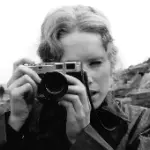The film "Oppenheimer" is currently captivating audiences, evoking sighs and tears as it delves into the life of the renowned "Father of the Atomic Bomb," J. Robert Oppenheimer. Amidst the emotional impact of the movie, a question has resurfaced: Why did J. Robert Oppenheimer never receive the Nobel Prize in Physics?
Throughout J. Robert Oppenheimer's educational journey, many of his mentors and classmates achieved or would go on to achieve Nobel Prizes. In a mere 27 months during the Manhattan Project at Los Alamos, a group of dedicated scientists succeeded in creating the first nuclear weapons, all in a race against Nazi Germany. Their relentless efforts ushered the world into the atomic age and played a pivotal role in bringing World War II to a close. 18 of Oppenheimer's colleagues who worked on the Manhattan Project eventually received Nobel Prizes. Some had earned the honour before joining the wartime laboratory, while most received recognition later. J. Robert Oppenheimer himself was nominated for the Nobel Prize in Physics on 3 separate occasions: in 1946, 1951, and 1967. However, he did not ultimately secure the award.

On December 2, 1963, in Washington, DC, USA, President Lyndon B. Johnson (on the left) awarded the Enrico Fermi Award to the nuclear physicist and “Father of the Atomic Bomb”, Robert Oppenheimer, during a ceremony held at the White House.
01 Born too late
“Well, he was no Einstein. And he’s not even up to the level of Heisenberg, Pauli, Schrödinger, Dirac, the leaders of the quantum revolution of the 1920s.” These insights come from David C. Cassidy, the author of "J. Robert Oppenheimer and the American Century," a physicist and emeritus historian at Hofstra University, as expressed in his article in "Science." As mentioned earlier, one contributing factor to Oppenheimer's somewhat modest achievements in physics was his comparatively later birth date.
Oppenheimer was born in 1904, so he was 3 years younger than Heisenberg, and 4 years younger than Pauli. Therefore, he was placed in the second wave of the quantum revolution, in what philosopher of science Thomas Kuhn called the “mopping-up operation,” which is the application of the new theory.

J. Robert Oppenheimer and the American Century
Before 25, Oppenheimer authored over a dozen research papers, primarily focusing on utilizing classical and innovative experiments to explore the latest developments in quantum theory. Cassidy contends that while these works hold significance, they are essentially derivative and don't carry the same weight as cutting-edge theoretical advancements.
However, this doesn't imply that Oppenheimer lacked proficiency in physics. In fact, his knowledge surpassed that of many of his peers. Kai Bird and Martin J. Sherwin, as documented in "American Prometheus: The Triumph and Tragedy of J. Robert Oppenheimer," noted that Oppenheimer was not only a theoretical researcher but also possessed a deep understanding of the advancements in experimental physics. He bridged gaps between various research fields, which is a rare form of capability. Some physicists have even suggested that Oppenheimer had the expertise and resources required to compile a comprehensive and systematic "Bible" of quantum physics.
In 1935, Oppenheimer's introductory course on quantum mechanics gained such widespread popularity at the school that his secretary began mimeographing his class notes and selling them to students. The proceeds were then used as a source of petty cash for the physics department. A colleague of Oppenheimer remarked, “If he were to take the next step and compile his lectures and papers into a single volume, his work could potentially become one of the finest textbooks on quantum physics ever written.”

American Prometheus: The Triumph and Tragedy of J. Robert Oppenheimer
02 Lack of focus
"He possessed skills and talent, but his dedication lacked the unwavering focus of a great physicist. Physics was merely one of his numerous passions," remarked David C. Cassidy when discussing Oppenheimer.
Oppenheimer's focus didn't just shift between different topics within physics; at times, it veered entirely outside the realm of physics. There were instances when he completely set aside physics for several months, immersing himself in activities such as reading books by Marcel Proust or studying the Sanskrit language. Additionally, he delved into left-wing politics, actively raising funds for the Communists during the Spanish Civil War.
In the book "American Prometheus: The Triumph and Tragedy of J. Robert Oppenheimer", it is noted that on February 14, 1930, Oppenheimer authored a ground-breaking paper titled "On the Theory of Electrons and Protons." In this paper, inspired by Dirac's equation, Oppenheimer proposed the existence of a positively charged counterpart to the electron, positing that this enigmatic counterpart should possess the same mass as the electron itself. Oppenheimer's ideas ultimately prompted Dirac to predict the existence of antimatter, a concept that was later experimentally confirmed in 1932 by the physicist Carl Anderson, who demonstrated the presence of positrons – the positively charged antimatter counterparts to electrons. In 1933, Dirac was awarded the Nobel Prize in Physics for his contributions to this field.
However, an issue that arose with Oppenheimer was his tendency to not dwell on a single problem for extended periods. Consequently, he often initiated research projects, but subsequent researchers made significant breakthroughs. In "American Prometheus: The Triumph and Tragedy of J. Robert Oppenheimer," it is mentioned that in 1930, he authored a notable paper discussing the infinite characteristics of spectral lines based on foundational theories. This paper revealed the splitting of spectral lines in hydrogen atoms, indicating a slight disparity in the energy levels between the two potential states of hydrogen atoms. Dirac held the belief that these two states should possess precisely the same energy, but Oppenheimer differed in his viewpoint within the paper, although he didn't pursue further validation of his conclusion.
A few years later, experimental physicist Willis Eugene Lamb, one of Oppenheimer's PhD students, successfully tackled this problem. He explained the "Lamb shift" by accurately attributing the disparity in energy levels to interactions between electrons and the electromagnetic field. For his precise measurement of the Lamb shift, Lamb was awarded the Nobel Prize in Physics in 1955. This recognition was a result of his pivotal contribution to the advancement of quantum electrodynamics.
According to Alan Carr, a senior historian at the National Security Research Center (NSRC) at Los Alamos National Laboratory, he believes that to win the Nobel Prize, it's not enough to have an exceptional idea; you also need substantial evidence to support it.
Oppenheimer didn't publish many significant papers, and he frequently collaborated with his students instead of taking the lead in initiating research. Hans Bethe, a Nobel laureate and physicist who served as the director of the Theoretical Division at Los Alamos Laboratory during the Manhattan Project, also pointed out that although Oppenheimer and others may have been more intelligent, his own level of productivity was greater.
Kai Bird and Martin J. Sherwin have noted that according to today's physicists, one of Oppenheimer's most remarkable and original works was his research on neutron stars, conducted in the late 1930s. In 1938, Oppenheimer collaborated with Robert Serber on a paper titled "On the Stability of Stellar Neutron Cores," which delved into the properties of highly compressed stars known as "white dwarfs." Subsequently, he teamed up with his student George Volkoff to publish a paper titled "On Massive Neutron Cores," in which they used calculations to establish an upper limit to the mass of neutron stars, beyond which they would become unstable. On September 1, 1939, Oppenheimer and another student, Hartland Sweet Snyder, published a paper predicting that collapsing stars might eventually give rise to what we now call black holes, though they didn't use the term "black hole" in their work. Interestingly, this paper didn't generate significant attention. It's worth noting that on the same day, September 1, 1939, Hitler's invasion of Poland marked the beginning of World War II.
Physicist John Wheeler revisited the question in the 1960s. It wasn't until the early 1970s, when advancements in astronomical observation technology aligned with theoretical progress, that astronomers finally uncovered black holes. Cassidy suggests that had Oppenheimer been alive during that period, he might have been awarded the Nobel Prize for this achievement.

Oppenheimer and Einstein
03 Manhattan Project
When selecting the director for the primary laboratory of the Manhattan Project, Leslie Richard Groves, who was in charge of the project, took note of Oppenheimer's absence of a Nobel Prize in Physics. He considered this a potential impediment to Oppenheimer's ability to lead a team of numerous Nobel laureates. However, Groves was struck by Oppenheimer's broad knowledge across various research domains. He recognized Oppenheimer's talent for synthesizing the entire research landscape and later remarked to reporters, "Oppenheimer is a polymath. Regardless of the subject, he can engage in a meaningful discussion."
Oppenheimer held the conviction that creating the atomic bomb demanded pragmatic solutions to a broad spectrum of interdisciplinary challenges. When Groves visited the laboratory, Oppenheimer was the first scientist to share this perspective. He highlighted that research on fast neutron nuclear fission conducted at Princeton, Chicago, and Berkeley often involved redundant efforts and emphasized the need for these scientists to collaborate. Groves, himself possessing an engineering background, was also greatly impressed by this insight.
Is the creation of the atomic bomb itself deserving of a Nobel Prize? In a 1949 article published in “Life Magazine”, Oppenheimer expressed the view that constructing an atomic bomb was a feat more inventive than scientific.

Oppenheimer and Leslie Groves
Alfred Nobel had a hope that his invention of dynamite would deter people from engaging in warfare by increasing the potential devastation of conflicts. However, this aspiration did not materialize. Similarly, the work overseen by Oppenheimer in the development of the atomic bomb did not lead to the lasting peace that was longed for. In "American Prometheus: The Triumph and Tragedy of J. Robert Oppenheimer," it is noted that when Oppenheimer was first nominated for the Nobel Prize in 1946, the Nobel Committee hesitated to grant the honor to someone so closely associated with the atomic bomb, given its connection to the tragic events in Hiroshima and Nagasaki. This hesitation has been a point of agreement among many academics and scientists over the years.
During the fall of 1946, Oppenheimer collaborated with Hans Bethe to co-author a paper on electron scattering, which they subsequently published in “Physical Review”. In the ensuing 4 years, he authored three additional concise physics papers and one in the realm of biophysics. However, after 1950, he did not publish another scientific paper.
"He did not have Sitzfleisch," physicist Murray Gell-Mann once remarked, using a German term that essentially means the capacity for sustained, laborious work while sitting. Gell-Mann's observation was that Oppenheimer didn't produce lengthy papers or intricate calculations and had limited tolerance for such endeavors. Instead, Oppenheimer's contributions primarily consisted of brief yet exceptionally brilliant insights that profoundly influenced the work of his peers.










































Share your thoughts!
Be the first to start the conversation.